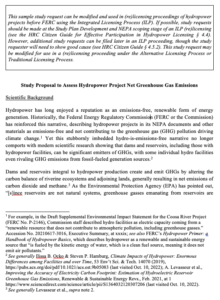Salmon litigation: a refresher on what this agreement does

Chinook salmon are on the brink of extinction. The Columbia Basin Restoration Initiative or CBRI, as well as U.S. government funding commitments, will bring a new approach to salmon and steelhead recovery in the Basin. Photo credit: Ryan Hagerty USFW
On February 8th, Judge Michael Simon approved the five year stay in litigation that IRU, our co-plaintiffs, and four Tribal Nations with Oregon and Washington (the Six Sovereigns) agreed on with the federal government in December. This ruling by an Oregon judge formally confirms that the Tribal-state plan crafted by the six Sovereigns, known as the Columbia Basin Restoration Initiative or CBRI, as well as U.S. government funding commitments, will bring a new approach to salmon and steelhead recovery in the Basin.
A Refresher on What This Agreement Does
The agreement will bring more than $1 billion in federal investments to wild fish recovery and Tribally-owned, clean energy projects in the region – and commits to crafting a roadmap to Lower Snake River Dams (LSRDs) removal within two fish-generations (around eight years) – all guided by the CBRI plan and carried out via the resources of federal agencies along with Tribal and State entities.
This transformational investment of money, resources, and expertise by the federal government reflects the long-standing dire situation of wild salmon stocks in the Basin due to a failed status quo as well as the need for the region to modernize its energy generation and infrastructure to both improve the health of rivers and ecosystems and build the resiliency of our communities in the face of climate change.
A main focus includes wild Snake River salmon and steelhead, who continue to carry the burden of the federal hydrosystem of dams and reservoirs on the Columbia-Snake Rivers, a system that is irrefutably a “recovery bottleneck” that blocks these populations of fish from the best shot at recovery to healthy and abundant numbers that could fully utilize the pristine spawning grounds of Central Idaho and Eastern Oregon.
The Six Sovereigns describe best just how important this tribal-state plan that forms the foundation of the litigation stay is:
“The CBRI helps bring forward the Tribal people and fisheries left behind in the rush of development by restoring salmon and steelhead with other native species and their habitats and investing in fisheries infrastructure. In so doing, the CBRI also protects and enhances other key service sectors by modernizing and investing in clean energy, agriculture, and transportation, helping restore vital ecosystem functions and services essential for local and regional resilience and adaptation to climate change.”
What Happens Next
Over the next few years the federal government, in collaboration with the Six Sovereigns, has committed to these actions, all informed by the CBRI plan:
-
Directing resources and funding towards a variety of wild fish recovery and habitat restoration efforts across the Basin following the recommendations outlined in NOAA’s Rebuilding Interior Columbia Basin Salmon and Steelhead report.
-
Addressing long-standing funding backlogs for hatcheries and restoration projects
-
Tweaking near-term management of hydrosystem operations to provide benefit to migrating salmon.
-
Reforming fish & wildlife mitigation management and funding, which has traditionally been the domain of Bonneville Power Administration (BPA), the agency responsible for selling the power generated by the hydrosystem.
Lower Snake River Restoration
Specifically related to LSRD services replacement and dam removal the federal government has committed to:
-
Tribal energy sovereignty in the region by supporting the development of Tribally-owned clean, renewable energy projects capable of replacing LSRD power generation.
-
Utilizing federal resources and the expertise of Agencies to produce replacement plans for energy, transportation, water/irrigation, and recreation services over the course of 2024 and early 2025.
-
Identifying funding sources for LSRD services replacement projects over the course of 2024.
Congressional Approval
Lower Snake River restoration and dam removal hinges on the approval of Congress. Members of Congress will be furnished with the above-referenced federal analyses on services replacement when completed, as well as salmon recovery and energy development projects ongoing throughout the region – all with the goal of moving the region away from the LSRDs and the status quo hydro system that has been destructive for salmon populations.
The Work Ahead for IRU
At IRU, we’ll highlight this agreement and the positive momentum on salmon recovery and LSRD removal that it signifies. We will continue to follow the leadership of Columbia Basin Tribes in calling for the restoration of abundant runs of salmon and the fulfillment of Treaty-reserved rights with the federal government.
This will entail working alongside our broad coalition of conservation and fishing groups to hold the federal government to their commitments and pressure agencies, such as BPA in particular, to move forward alongside the “whole-of-government” approach to salmon recovery and modernizing the regional energy grid.
We’ll need the support of our members and fellow salmon advocates along the way to ensure members of Congress across the nation understand the imperative need to authorize LSRD removal and restore wild salmon.
This post originally appeared on News – Idaho Rivers United.


